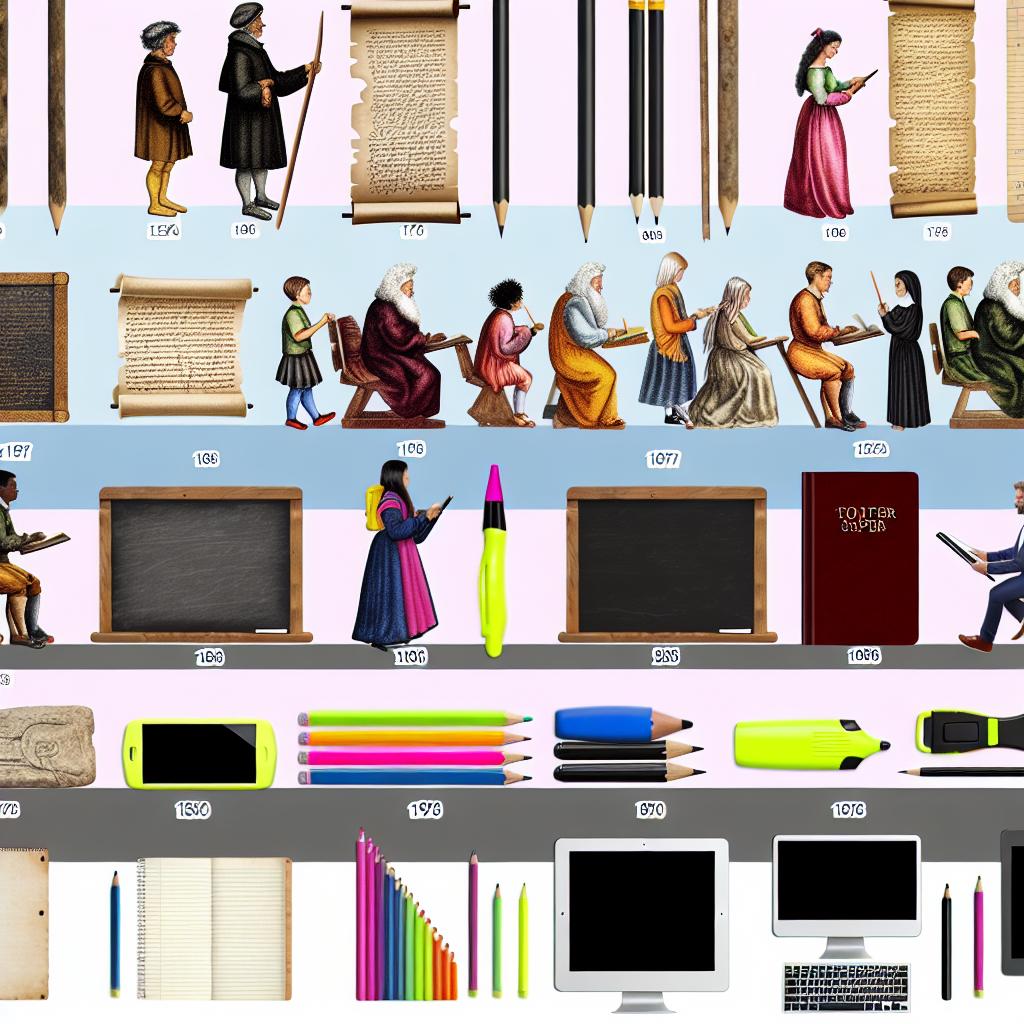How School Supplies Have Evolved Over Time

The Early Days of School Supplies
The inception of school supplies is rooted deeply in history, tracing back to times well before the advent of modern classrooms. Initial learning tools were rudimentary constructs, created to assist in the recording and retention of information. Clay tablets and styluses were the mainstay in ancient academic environments, providing students the means to etch their lessons into tangible form. This was an era that marked the genesis of educational tools, setting the precedent for future innovations.
As societies evolved, so did their pedagogical tools. The transition from clay to parchment and ink marked a significant leap forward. This development was pivotal as it allowed for enhanced durability and permanence in written records. It represented a departure from eras when learner’s work was ephemeral, etched temporarily into clay. With parchment, records could endure, allowing for the accumulation and transmission of knowledge through generations, evolving education from oral traditions to written documentation.
The Introduction of the Pencil and Paper
As centuries passed, the 17th century became a turning point in the evolution of educational implements with the advent of the pencil. This seemingly simple invention, comprising graphite encased in wood, was revolutionary. It offered a lightweight, efficient, and portable option for students, significantly reducing the burden of writing. With the pencil, erasing errors became simpler, enhancing the learning process as students could easily make corrections and learn from their mistakes.
Simultaneously, paper emerged as the primary medium for written work, gradually overshadowing parchment. Its accessibility and versatility changed the academic landscape. Paper’s adoption as a staple supply item was driven by its affordability and ease of production. This shift not merely altered how students wrote, but it profoundly impacted the way they engaged with the content. The burgeoning availability of paper facilitated broader distribution of knowledge and education, laying the groundwork for widespread literacy and learning.
The Birth of the Blackboard
The 19th century welcomed the blackboard into the classroom setting, marking another significant advancement in educational techniques. This tool fundamentally transformed group education methodology, allowing educators to efficiently convey information to a collective audience. The blackboard served as a visual aid, helping to clarify complex ideas through illustrations and demonstrations. It encouraged interactive learning, enabling student-teacher dialogue and discussion.
The introduction of the blackboard was not only about the technology itself but also symbolized a shift in teaching methodologies. It heralded a move toward more structured and interactive educational environments where information could be displayed prominently for all to see. The blackboard reigned supreme in classrooms until the end of the 20th century, at which point technological advancements initiated a transition to whiteboards and later, digital displays.
The Role of Technology in Education
The closing years of the 20th century and the beginning of the 21st marked a technological revolution in educational settings, redefining the concept of school supplies. Personal computers and subsequently, tablets, have become integral components of modern learning environments. These digital resources are not only tools for word processing or presentations but are gateways to a universe of information available at the touch of a button.
Today’s classrooms often feature devices and smart technologies that are used to enhance the learning experience. With the internet, students and teachers have access to a nearly infinite repository of information, paving the way for more enriched, diversified, and self-directed learning. Digital textbooks, educational websites, and online platforms further contribute to an interactive, flexible, and engaging education environment where traditional constraints of time and geography seem to disappear.
Tablets and Applications
The integration of tablets and applications in education signifies a further evolution in school supplies. These tools offer a degree of interactivity and customization previously unimaginable. Tablets are ubiquitous in classrooms, supplanting notebooks and textbooks as primary learning aids. The functionality they offer extends from basic reading and calculations to intricate simulations and immersive experiences that can replicate scientific experiments and historical events with high fidelity.
Applications designed for education are transforming how students learn and absorb information. From reinforcing foundational concepts in mathematics to visualizing complex scientific phenomena, apps cater to a wide array of learning styles and preferences. Their adaptability helps in crafting personalized and inclusive education pathways, accommodating various paces of learning and ensuring no student is left behind. Educational technology platforms offer insights into the impact and reach of these digital tools, providing case studies and analysis on their application and benefits in diverse educational settings.
Environmental Considerations
In recent years, there has been a growing emphasis on environmental sustainability in the realm of school supplies. As awareness of ecological responsibility rises, the demand for eco-friendly products has surged. This demand is fostering innovation in the creation of sustainable supplies, aimed at mitigating the ecological footprint of the educational system.
Manufacturers are increasingly turning to recycled materials in the production of traditional supplies. For instance, pencils constructed from recycled newspapers, pens crafted from biodegradable materials, and notebooks produced with recycled paper are increasingly common. These efforts represent a conscious move toward sustainability, reflecting broader societal trends in environmental stewardship and resource conservation.
In summary, the ongoing evolution of school supplies is a reflection of broader technological advancements and societal trends. As educational priorities shift and ecological challenges grow, the tools employed in classrooms will likewise continue to transform. The journey of school supplies is far from over, and as it progresses, it is preparing students not only to meet the demands of contemporary education but to tackle the complexities of the future world. Through these evolving tools, future generations are being equipped with the resources necessary for effective learning and innovation, ready to confront and overcome the challenges of tomorrow.